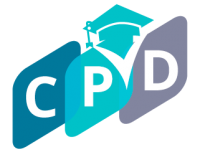Introduction:
Note-taking is a skill that transcends the classroom, extending its importance into professional settings, meetings, and self-directed learning. Mastering the art of note-taking is not only about capturing information but also about creating organized, engaging, and effective notes that enhance understanding and retention. In this article, we’ll explore tips for elevating your note-taking skills, making your notes a valuable tool for learning and reference.
- Choose the Right Note-Taking Tools: Before diving into the content, choose the right tools for your note-taking. Whether you prefer traditional notebooks, digital devices, or a combination of both, select tools that align with your preferences and the context of your note-taking.
- Use a Consistent Structure: Establishing a consistent structure for your notes enhances organization and readability. Whether you opt for bullet points, outlines, mind maps, or a combination, maintaining a uniform format across your notes streamlines the review process and helps you locate information quickly.
- Active Listening for Key Points: Effective note-taking begins with active listening. Focus on identifying key points, main ideas, and supporting details during lectures, discussions, or readings. Actively engage with the material to discern essential information that merits inclusion in your notes.
- Differentiate Between Main Ideas and Details: Distinguish between main ideas and supporting details in your notes. Use headers, bolding, or different formatting to emphasize main concepts. This hierarchy helps you grasp the overarching themes and relationships within the information.
- Develop a System of Abbreviations and Symbols: Speed is often crucial during note-taking. Develop a system of abbreviations and symbols to streamline the process. For instance, use arrows for “leads to,” abbreviate common words, and employ symbols for recurring themes. This shorthand system saves time and allows for more efficient note-taking.
- Color Coding for Visual Organization: Introduce color coding to visually organize your notes. Assign different colors to categories, topics, or levels of importance. This visual distinction adds clarity and makes it easier to scan and review information efficiently.
- Utilize Cornell Method for Comprehensive Notes: The Cornell Method is a structured note-taking system that enhances comprehension and review. Divide your note paper into three sections: a narrow left column for cues or questions, a wider right column for main notes, and a summary section at the bottom. This method promotes active engagement and facilitates effective review.
- Employ Mind Mapping for Visual Representation: Mind mapping is a powerful technique for visually representing connections between ideas. Start with a central concept and branch out, connecting related ideas with lines and keywords. Mind maps provide a holistic overview of a topic and encourage a deeper understanding of relationships between concepts.
- Include Personal Annotations and Examples: Make your notes more engaging and memorable by incorporating personal annotations and examples. Relate new information to your own experiences or provide real-world examples. This personal touch not only reinforces understanding but also adds a layer of connection to the material.
- Leave Space for Later Annotations: Allocate space in your notes for additional annotations, reflections, or follow-up information. This proactive approach allows you to build on your initial notes during review sessions or when additional details become available.
- Review and Revise Regularly: Regularly review and revise your notes to reinforce learning and identify areas that may need clarification. Schedule dedicated time for review sessions to ensure that your notes remain current and aligned with your evolving understanding of the subject matter.
- Create a Master Index or Table of Contents: For extensive notes spanning multiple sessions or subjects, create a master index or table of contents. This centralized reference point makes it easier to navigate and locate specific information within your notes quickly.
- Digital Tools for Enhanced Note-Taking: Leverage digital tools for enhanced note-taking capabilities. Apps like Evernote, Microsoft OneNote, or Notion offer features such as cloud synchronization, searchable content, and multimedia integration. Experiment with these tools to find the one that best complements your note-taking style.
- Experiment with Different Note-Taking Styles: Explore various note-taking styles to find what works best for you. Whether you prefer linear notes, concept maps, or a combination of styles, adapting your approach to the context and content enhances the effectiveness of your notes.
- Seek Feedback and Collaborate: Share your notes with peers or mentors and seek feedback. Collaborative note-taking sessions can provide diverse perspectives, fill gaps in understanding, and introduce alternative insights. Engaging in this collaborative process enriches your notes and enhances your overall learning experience.
Conclusion:
Mastering the art of note-taking is a continual process of refinement and adaptation. By employing these tips, you can transform your notes into organized, engaging, and effective tools for learning and reference. Whether you’re a student in a classroom, a professional in a meeting, or an independent learner, the skill of note-taking will serve as a valuable asset in your academic and professional journey.
